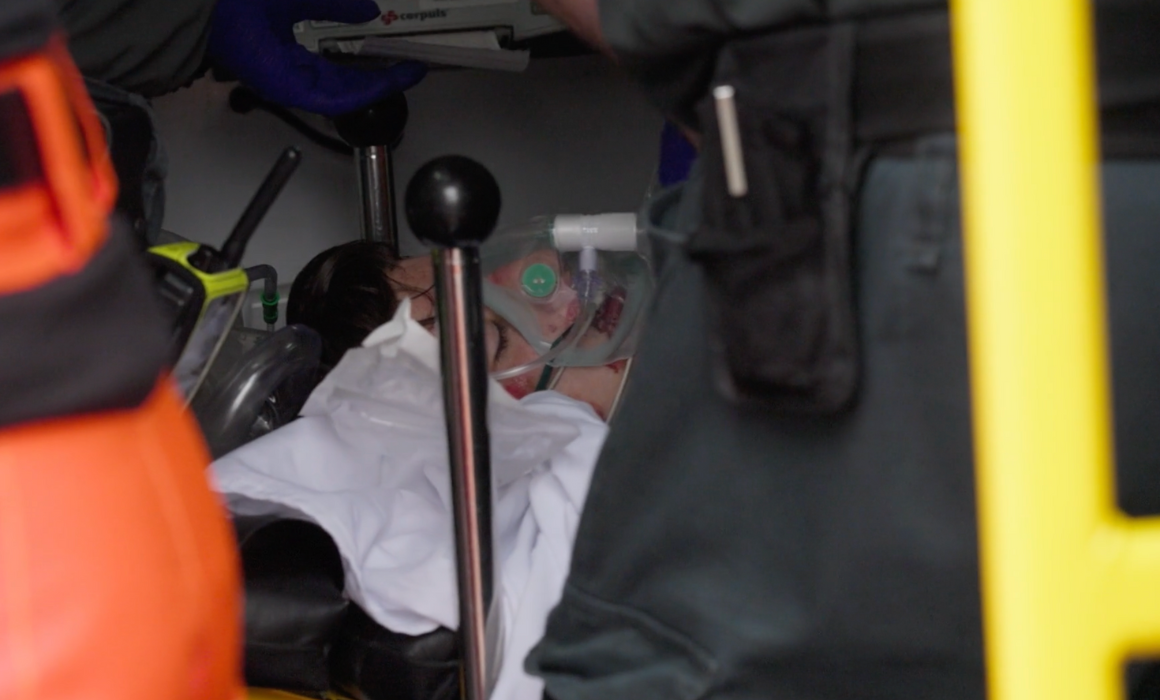The latest episode of Yorkshire Air 999, airing on Really and discovery+ this Friday 14th November at 9PM, follows the Yorkshire Air Ambulance (YAA) team as they respond to a major road traffic collision in Doncaster that left a young motorcyclist with multiple serious injuries and a bleed on the brain.
20-year-old Kaiden Marshall was just minutes from home, , when he collided with a car. The impact threw him several metres from the bike, knocking off his helmet and leaving him in and out of consciousness. Multiple 999 calls were made by witnesses, and a land ambulance was quickly dispatched before requesting critical care support from YAA medical team, concerned that Kaiden may have sustained a serious head injury.

Yorkshire Air Ambulance’s Nostell-based crew, consisting of Dr Stuart Reid and Paramedic Tammy Williams, arrived at the scene within minutes. Landing in a nearby field just a few metres from the crash site, the team had to climb a fence to reach Kaiden, where they joined the local ambulance paramedics who had already moved him from the roadside into the back of their ambulance.
Kaiden had sustained facial injuries, a suspected broken jaw, shoulder pain, and was showing signs of confusion and agitation, both common symptoms of a significant head injury.
Dr Reid explained, “When we arrived, Kaiden was clearly distressed and showing signs of a head injury. He was restless, confused and wouldn’t keep still, which made it difficult to communicate or assess him properly. My concern was that he could deteriorate quickly, so we needed to stabilise him and take control of his airway to keep him safe.”
Tammy inserted a cannula and administered ketamine, a powerful pain-relieving drug commonly used in emergency medicine. However, when Kaiden showed no improvement and continued to deteriorate, the team made the critical decision to perform a Rapid Sequence Induction (RSI), a complex procedure used to place a patient into a medically induced coma.
Dr Reid continued, “An RSI is one of the most critical interventions we perform. It removes a patient’s ability to breathe on their own, so everything has to be done with absolute precision. In any high-stress situation, we rely on our RSI checklist to make sure nothing is missed. It’s a vital aid that keeps the whole team coordinated and ensures the procedure is performed safely.”
Kaiden was given a combination of three drugs to allow the crew to take control of his breathing. Once sedated, YAA Paramedic Tammy had only seconds to insert a tube into his windpipe, place him on a ventilator, and prepare him for transfer to hospital.
Dr Reid pre-alerted the trauma team at Sheffield’s Northern General Hospital as the crew made the short journey by land ambulance to the nearby helicopter. He was then transferred into the aircraft and flown the six-minute flight to hospital where the waiting trauma team were ready for his arrival.
Kaiden spent three days in a coma and a week in hospital, where he was treated for a bleed on the brain, a broken jaw, and a fractured foot and is now recovering well at home.

Speaking about the crash, Kaiden said, “I can’t remember much. I remember putting my tracksuit on and then nothing until I woke up in hospital with my mum and everyone around me. They told me I’d had a bad crash and a bleed on the brain. I still have some ankle pain and short-term memory loss, but I’m recovering really well. I’m just so thankful the Air Ambulance could come straight out and help me. I’d love to meet the doctor one day, shake his hand, and say thank you for what he did.”
Alongside Kaiden’s story, this week’s episode also features a man who broke his tibia and fibula while on a walking holiday with his son, the driver of a car that overturned into a hedge on the A19, and an 80-year-old cyclist who spent more than a month in hospital after coming off his bike on the Trans Pennine Trail.
